The undisputed highlight of Kosovo is the magnificent Visoki Dečani Monastery, set in the beautiful surrounds of the Deçan Canyon. The monastery is about 2km from Deçan Town, easily accessible by road. KFOR troops guarding the building will ask you for an ID card.
A special highlight is the weekly evensong on Thursdays at 19.00 and the choral church service on Sundays at 08.00. If you can time your visit, it’s an unforgettable experience to listen to traditional Orthodox chorals in this amazing setting.
The monastery is the endowment of King Stefan Uroš III, who ruled over the Serbian lands from 1321 to 1331. His life was marked by grave family disputes. Back in his childhood, he was imprisoned for six years in Constantinople on the orders of his father King Milutin. Upon his return, he inflicted a crushing defeat on the Bulgarians in 1330. His son, Stefan Dušan, displayed exceptional courage and military skills fighting alongside his father in this decisive battle.
In 1331, Stefan Dušan spearheaded a revolt against his father, imprisoned him in the fortress of Zvečan and gave orders to kill Stefan Uroš III in his prison cell. According to his last will, Stefan Uroš’s remains were buried in the Dečani church and to this day he is venerated as a Serbian saint on 24 November. In memory of his greatest legacy, the endowment of the Visoki Dečani Monastery, Stefan Uroš became known in history as Stefan Dečanski.
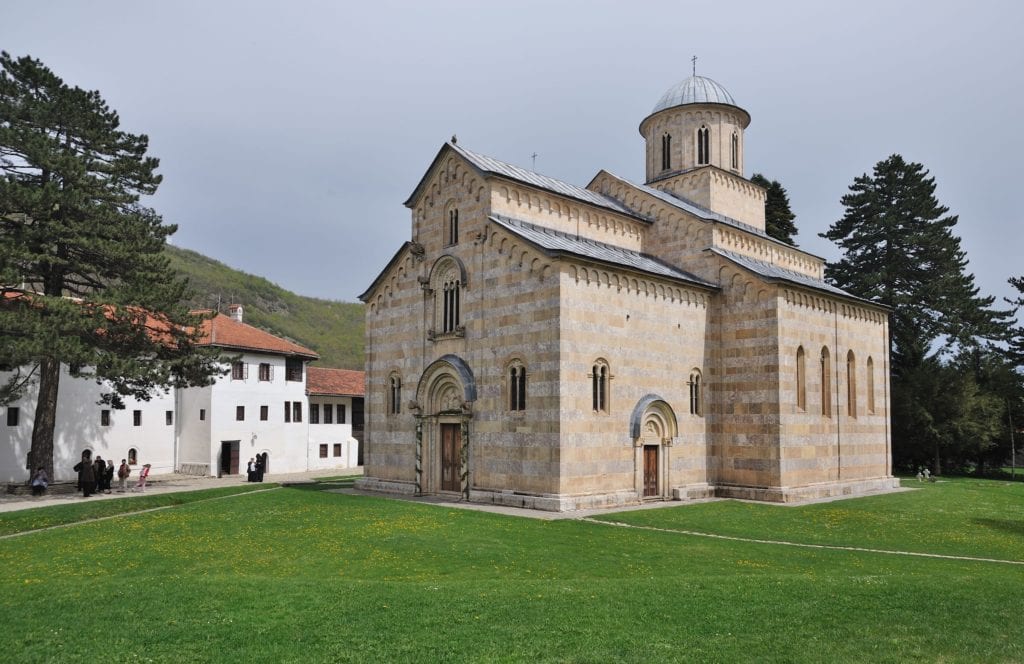
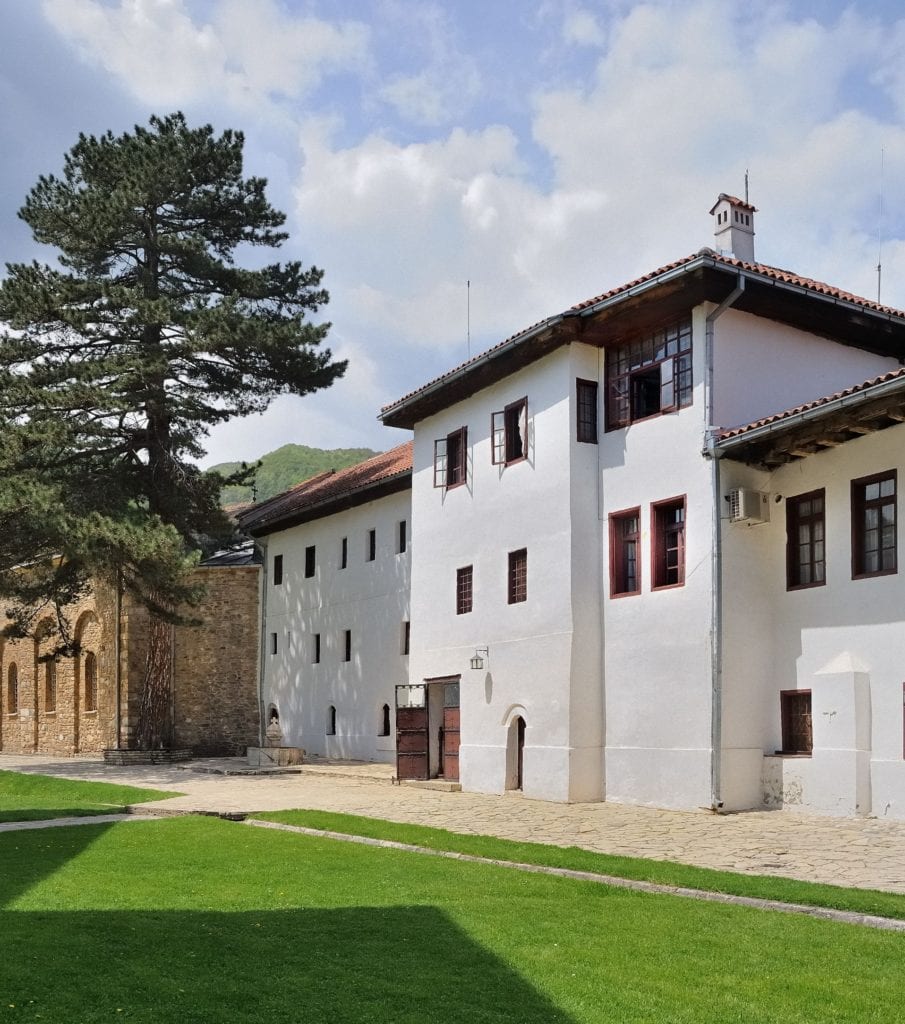
Construction of the Dečani church started in Stefan Uroš’s reign in 1327 under the guidance of the architectural mastermind Fra Vita, a Franciscan monk from Kotor, in present-day Montenegro. The construction of the church was completed under King Dušan in 1335. He entrusted the exceptionally gifted Archbishop Danilo II with the supervision of the works.
Painting and theft
The completion of the fresco paintings lasted until 1350. They are attributed to a Greek school of painters assembled at King Dušan’s court, who painted in Orthodox and Catholic churches along the coast.
The Visoki Dečani Monastery was raided and partially destroyed only once in the early days of the Turkish conquest of the Balkans. Throughout the major part of the Ottoman era, the monastery enjoyed the sultan’s personal protection, as confirmed by several charters issued by successive sultans extending special privileges to the monastic community and their estates. The sultan’s firmans (decrees) not only provided for protection, they also guaranteed the monks from Deçan a special tax status.
The monastery also enjoyed special protection from the population living in the area, because according to folk belief, the tomb of Stefan Dečanski located in the church’s interior had healing powers and was venerated by Orthodox, Catholic and Muslim Albanians alike.
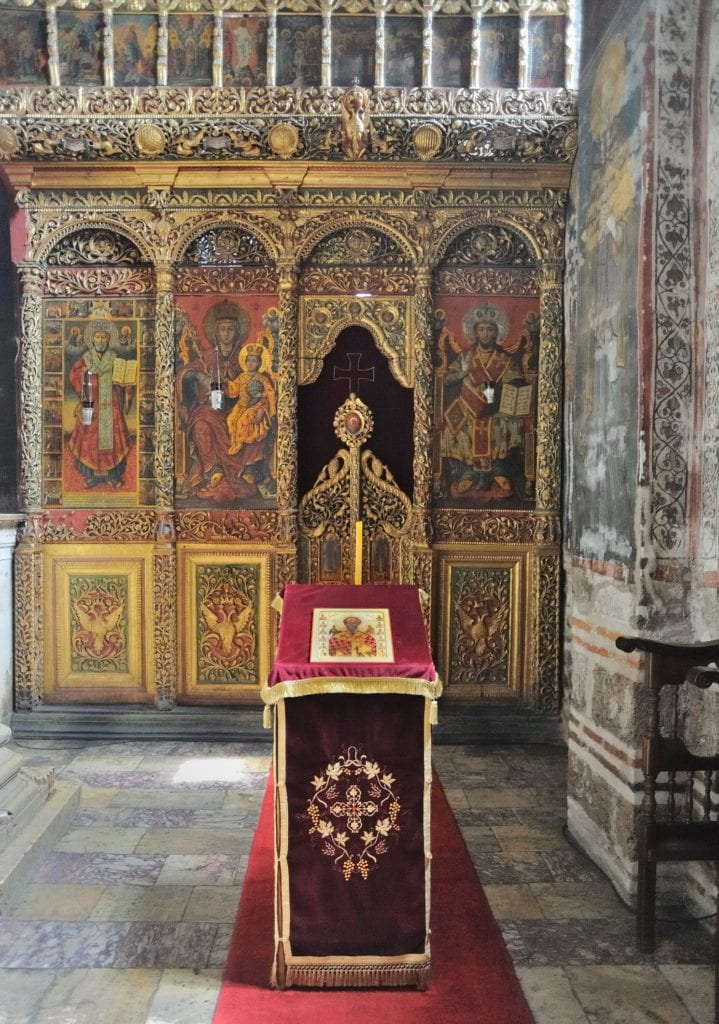
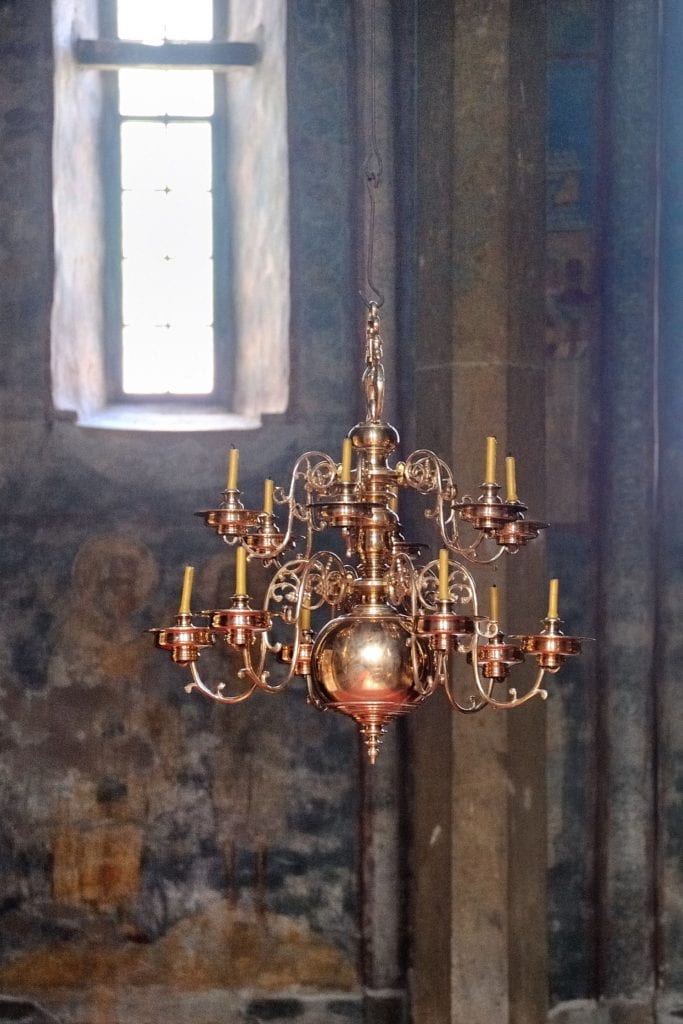
Thanks to this privileged position, the monastery prospered in the Ottoman period. Richly endowed with agricultural land, vineyards and fruit orchards, the monastery sustained a vibrant monastic community.
Education and fire
An important school of monastic learning developed here in the 15th and 17th centuries, producing books bound in leather skins as well as elaborately decorated miniatures and a large collection of icons. One of the most valuable books was the Life of Stefan Dečanski, written by the scholar Grigorije Camblak. Some of the monks chose to live high up in the hills over the left bank of the Bistrica River in medieval hermitages (inhabited caves).
Disaster struck with a devastating fire that destroyed large parts of the complex in the 17th century. The monastery fell into a period of rapid decline. When Daniel Pastrovich-Kazanegra took over the monastery’s priory in 1764, there was only one monk left. Under his energetic administration, a new iconostasis was built and the monastic dwellings were rebuilt. Daniel is often considered the second founder of the Visoki Dečani Monastery.
The importance of the monastery in the history of the Serbian Orthodox Church secured it generous donations during the course of the 19th century. The Serbian prince Miloš Obrenović, for example, donated the construction of a new refectory for the monks in 1836 and Prince Aleksandar Karadjorjević financed the lead roofing of the church in 1857. The First Yugoslav government in the late 1930s also financed major restoration works.
Monastic marble
A wall surrounds the monastery and as you enter the complex through an impressive gate, a spectacular view opens up in front of you. The church walls are built with carefully hewn blocks of red-purple and light-yellow marble, set against a beautifully composed monastic complex. Take a moment to enjoy this peaceful setting before entering the church itself and make sure to visit to the monastery gift shop just over to the right on your way out.
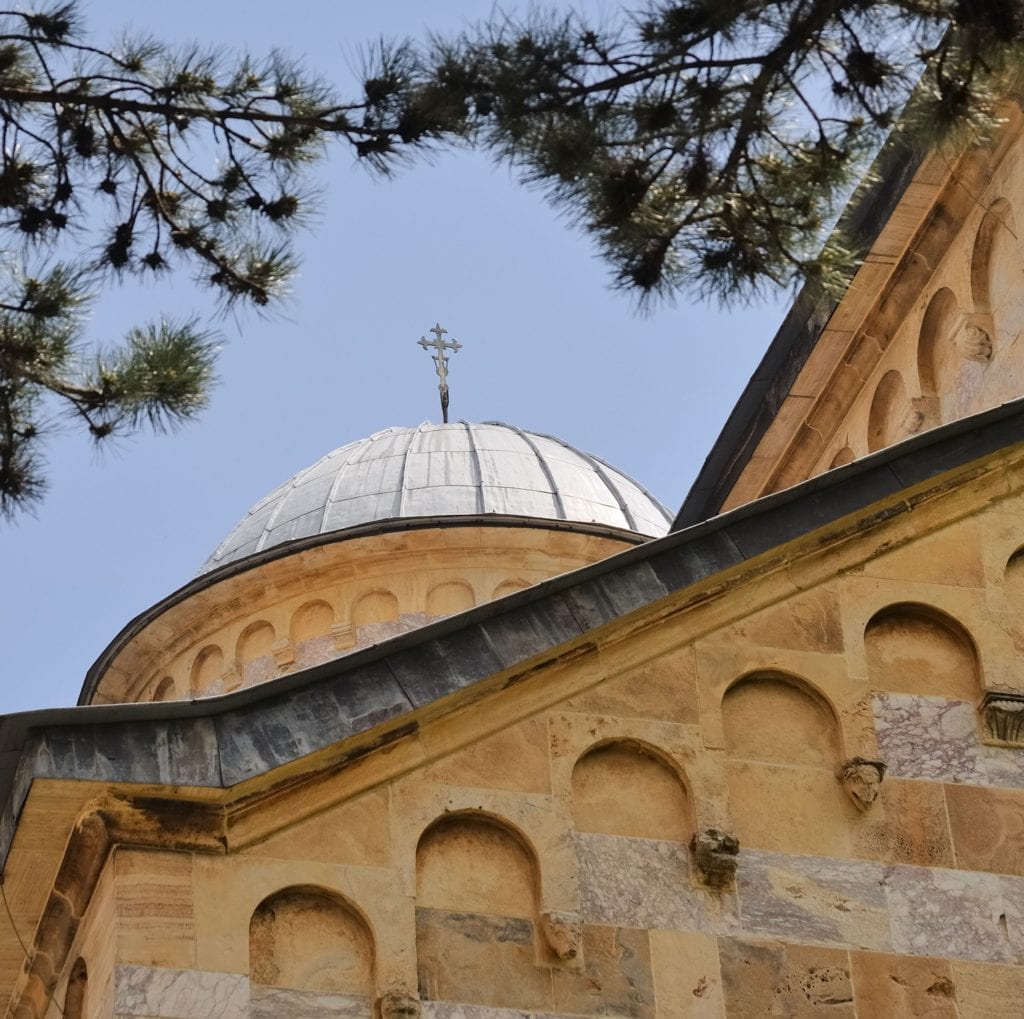
The church is one of the largest medieval Serb structures, 29m in height, with a length of 36m. Its five-nave structure is topped with a slim cupola resting on four major pillars. Combining Byzantine, Romanesque and Gothic elements, it reflects the different artistic influences competing at King Dušan’s court.
Gothic influences came via the Adriatic coast, while the school of Byzantine painters ensured the flow of the latest trends from Constantinople. In its design it is similar to the mausoleum of Stefan Nemanjić in Studenica, in Serbia today, especially the three-part window near the altar, which is decorated with animal creatures and scenes symbolising paradise and hell.
Fanciful figurines
Above the southern entrance of the church you can see an inscription in old Cyrillic about the construction of the church. The western entrance is guarded by two lion figures (one is actually a creature part-lion, part-eagle), with Christ hovering above surrounded by two angels. The artists had never actually seen a lion in their lives!
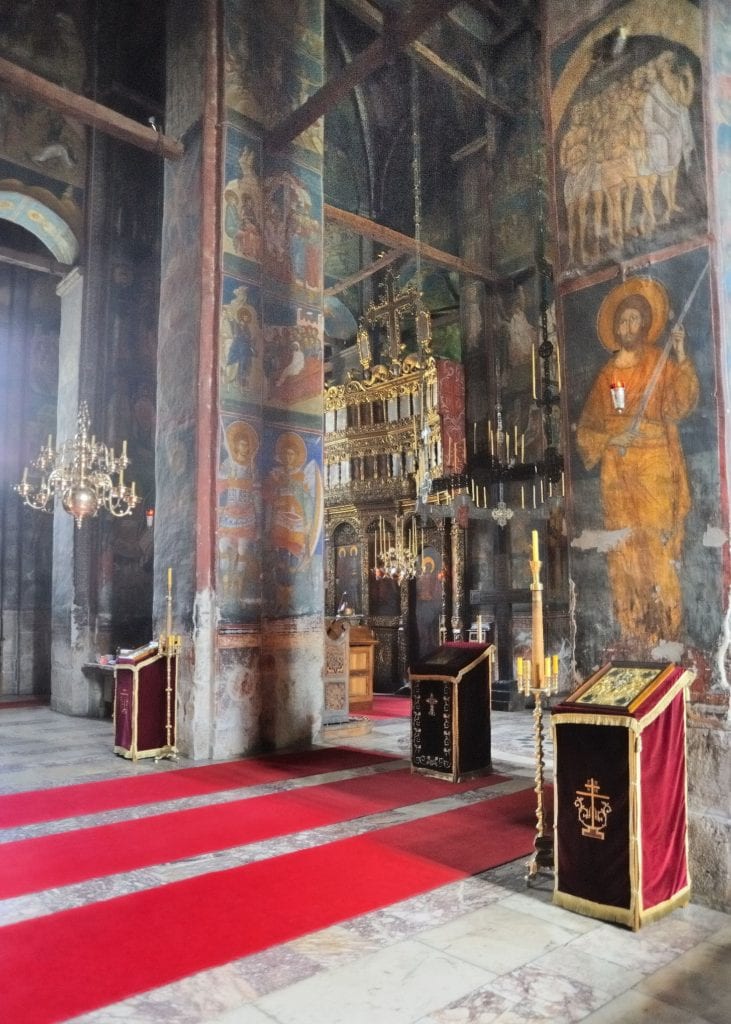
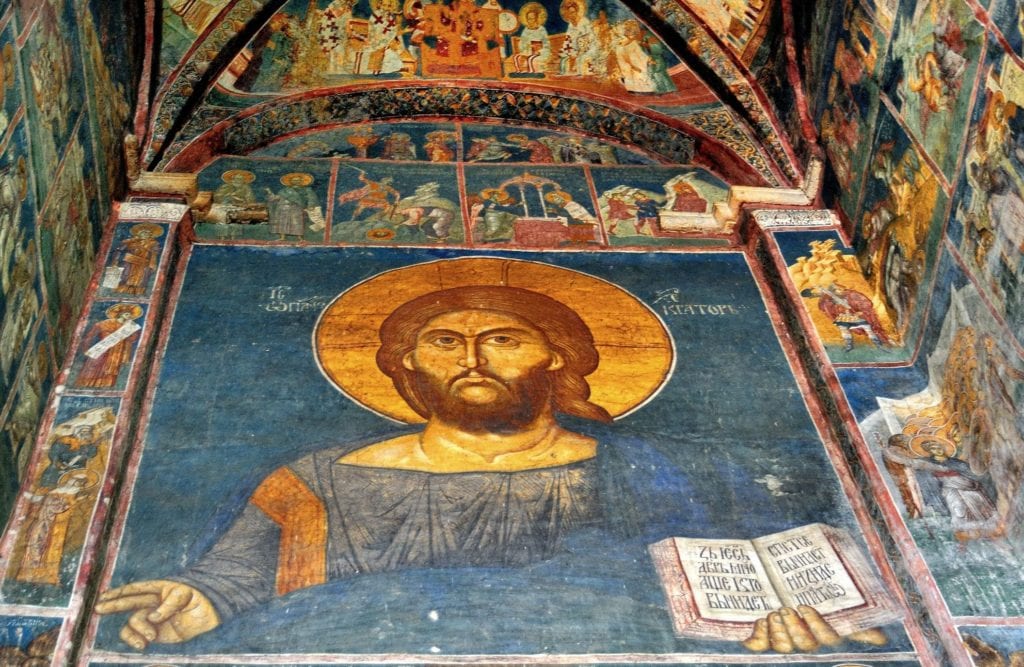
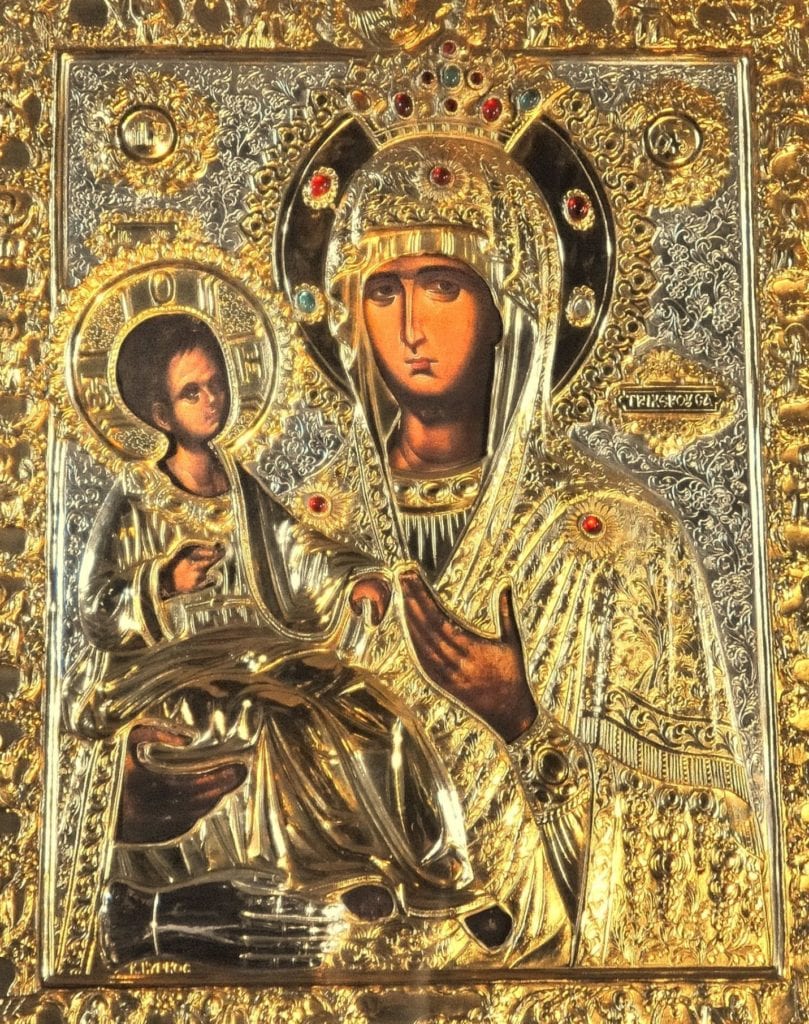
As you enter the church through its north-facing doorway, you can admire an exceptionally well-preserved and colourful interior covered entirely with more than 1,000 compositions and figures. It is like a splendidly illustrated book of biblical stories for illiterate believers, capturing the spirit of the 14th century. The masters of these fresco paintings are unknown, with the exception of Sergius the Sinful, who inscribed his name on one of the church’s pillars.
Christ the Pantokrator is represented in the cupola, surrounded by the prophets. The frescoes on the nave depict the life of Christ. The passion of Christ is painted on the four main pillars supporting the cupola in the centre. Other compositions include scenes from the life of the Virgin, a cycle on the lives of the Apostles as well as the entire story of Genesis starting with the creation of the world on the western side of the arch in the chapel of St Dimitrius and finishing with the construction of the Tower of Babel.
In the narthex you can see a Nemanjić family tree and portraits of Emperor Dušan and his family. The paintings are impressive in their love of detail and bright colours. The carefully carved and painted tomb of the church’s founder Stefan Dečanski rests appropriately in the church’s centre.
More information
Read more about the stunning monastery at Visoki Dečani and the rest of Kosovo in our guide book: